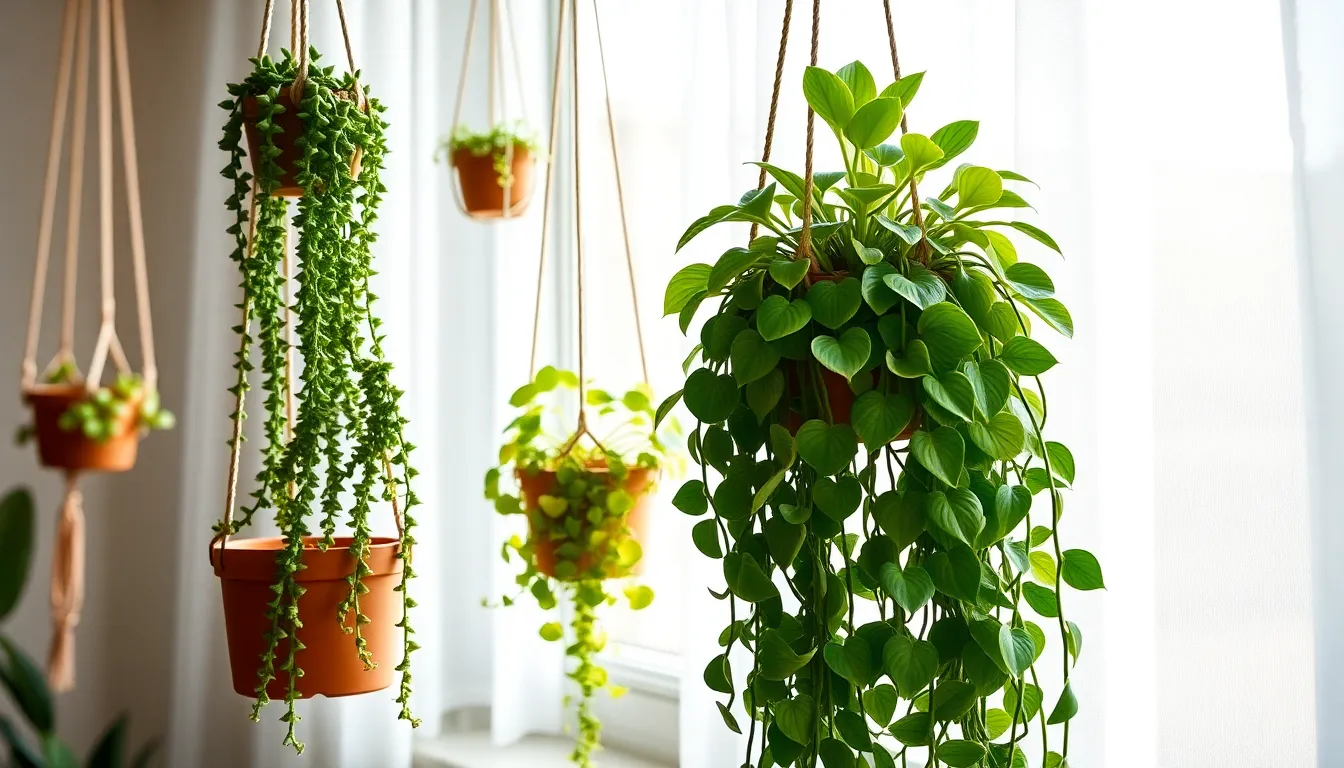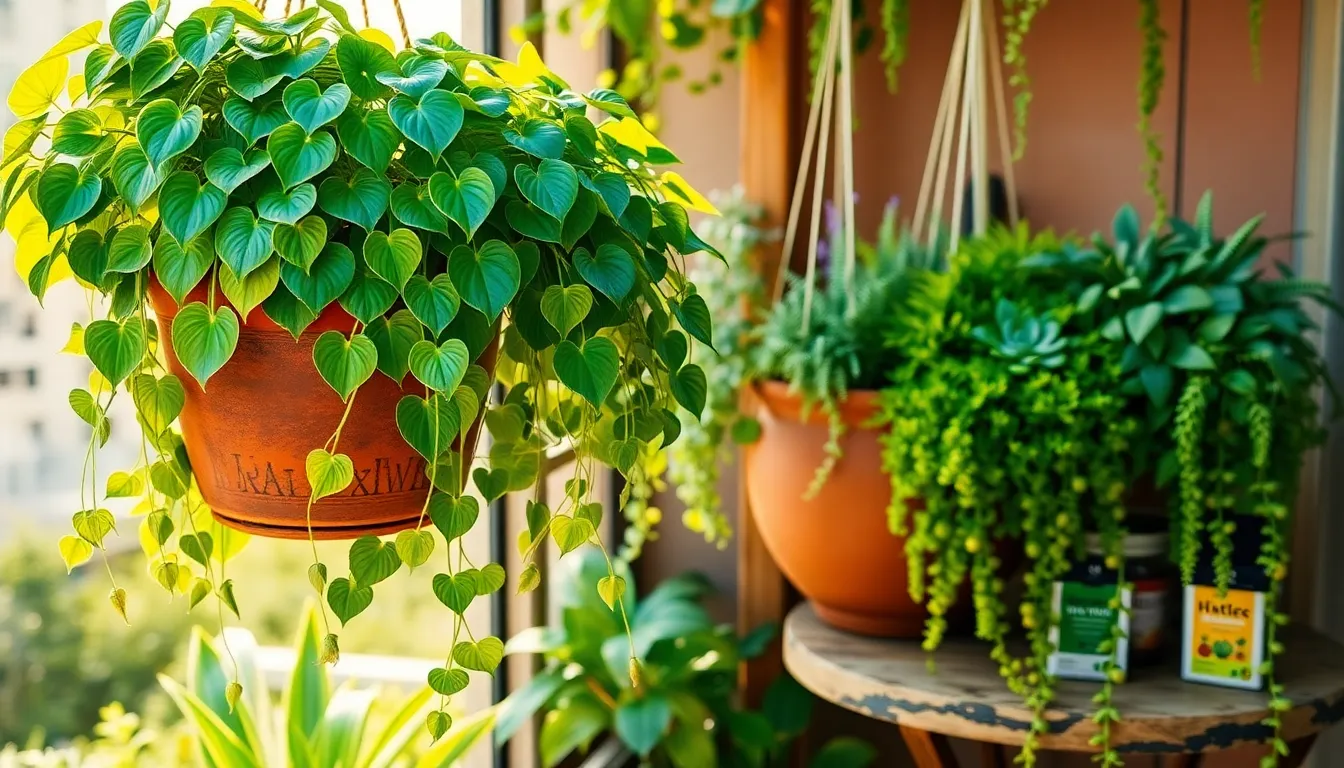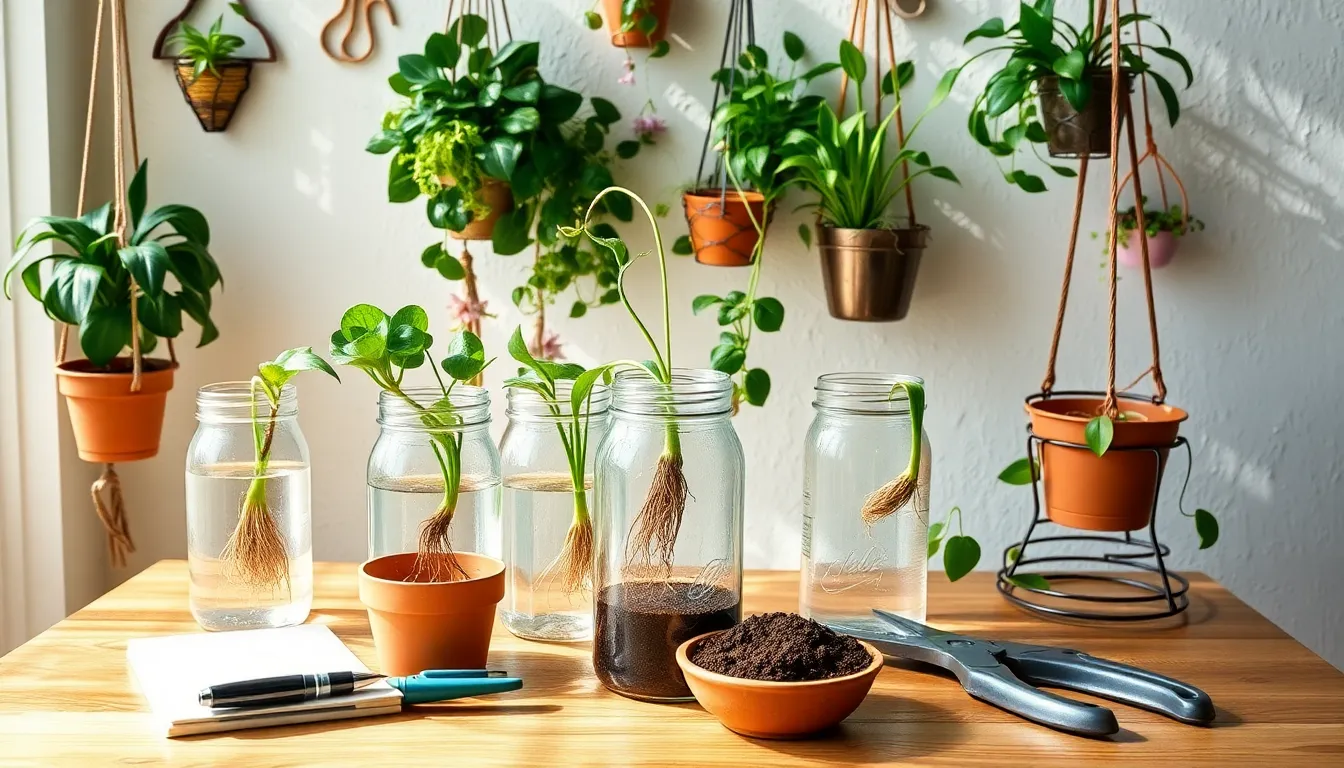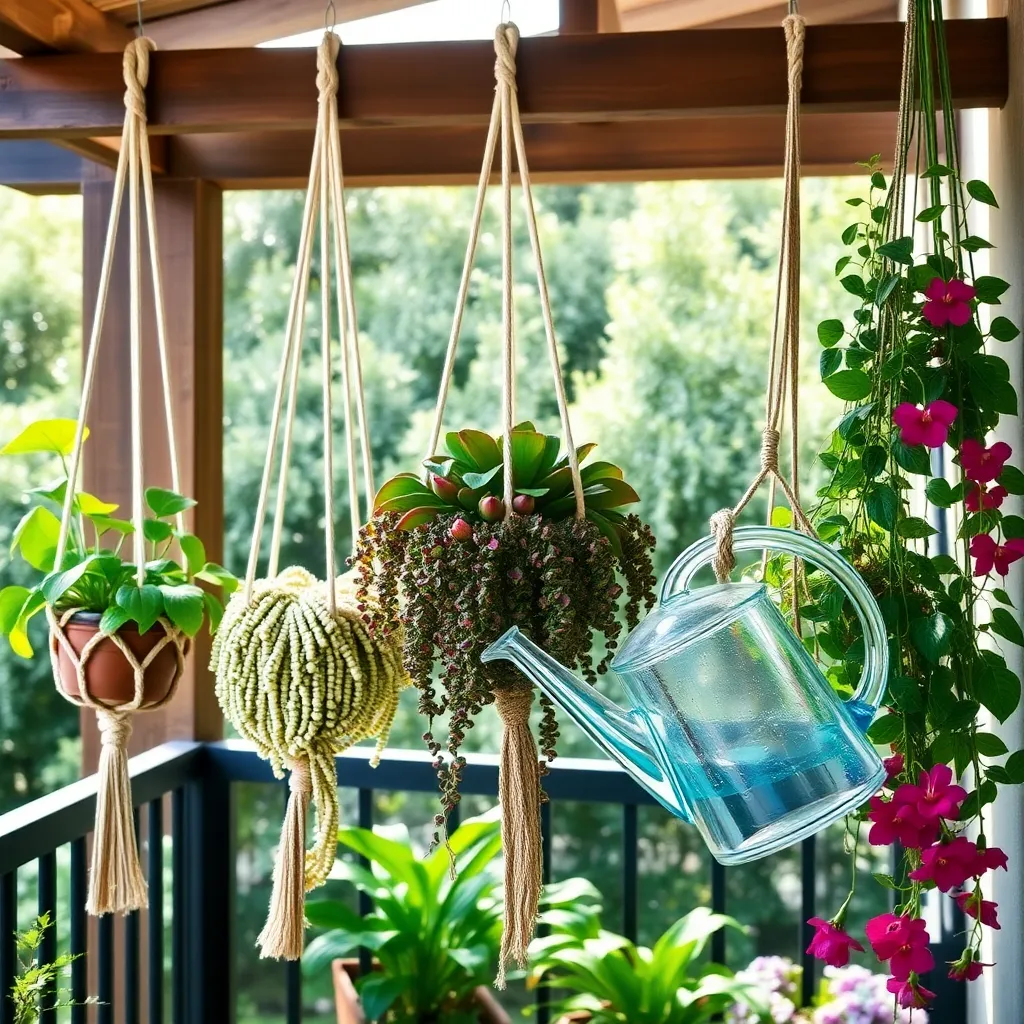Transforming your living space into a lush, green haven doesn’t have to break the bank. Whether you’re a seasoned gardener with a green thumb or a beginner just starting to explore the joys of indoor gardening, hanging plants offer an affordable and stylish way to enhance your home. They bring a touch of nature indoors, purifying the air and adding a dash of elegance with their cascading leaves and vibrant colors. Hanging plants are also perfect for those with limited floor space, allowing you to maximize your greenery without cluttering your surfaces.
Our upcoming guide is designed to introduce you to a delightful selection of 12 budget-friendly hanging plants that can thrive in various home environments. You’ll discover options that are not only easy to care for but also versatile enough to suit different lighting conditions and interior styles. Each plant we showcase has been chosen for its affordability and adaptability, ensuring that your investment in greenery is both economical and rewarding. From the charming String of Pearls to the resilient Spider Plant, there’s something for everyone to love.
Join us as we delve into the world of hanging plants, where you’ll learn tips and tricks for selecting the right plants for your space, maintaining their health, and creatively displaying them. This article will equip you with the knowledge to confidently care for your new leafy companions, helping you foster a thriving indoor garden with ease. Together, we’ll explore the joy of nurturing these living decorations, making your home a sanctuary filled with life and vitality. Let’s embark on this green journey and cultivate an inviting home environment without stretching your budget.
Introduction to Budget-Friendly Hanging Plants
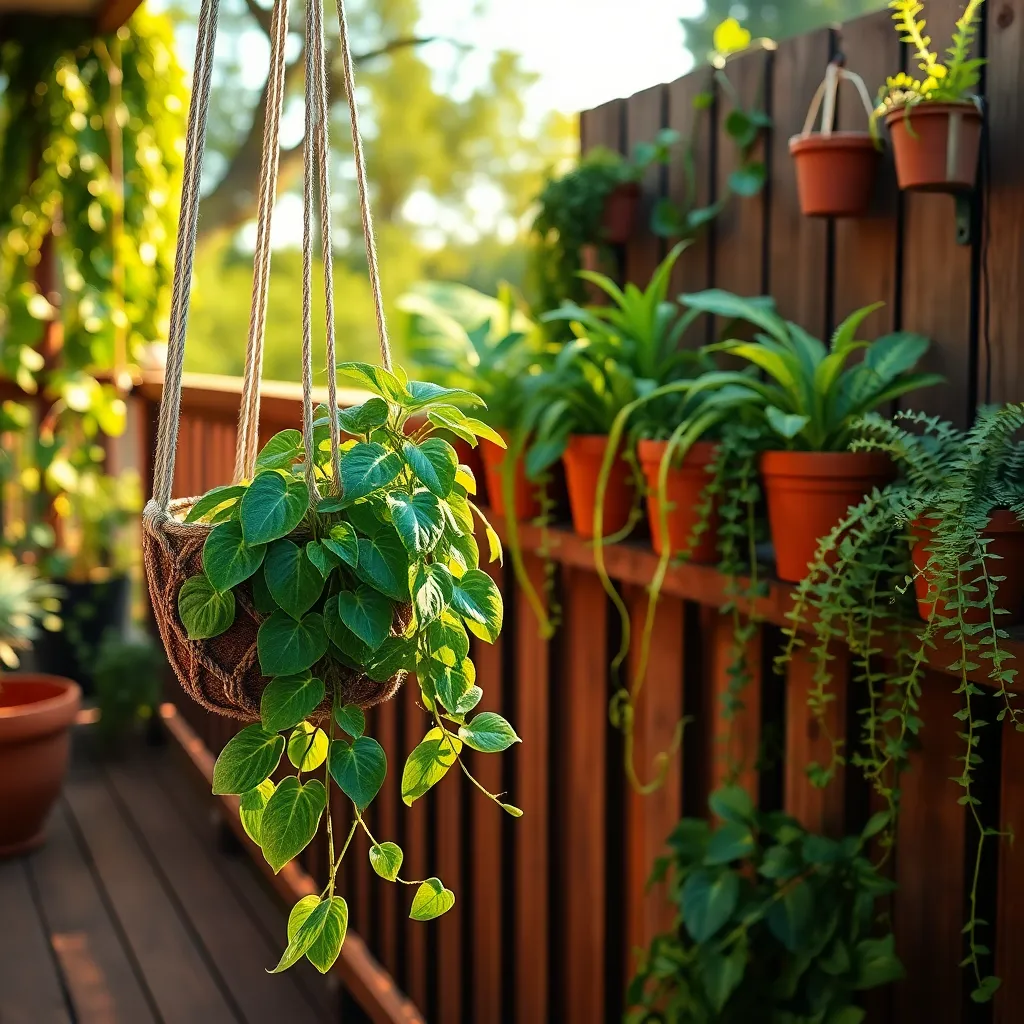
Hanging plants can be a cost-effective way to add greenery to your home without taking up floor space. They are especially appealing for small apartments or homes where space is at a premium.
To get started with hanging plants, choose varieties that are known for being low-maintenance and adaptable. Pothos and spider plants, for example, thrive in a range of lighting conditions and can tolerate occasional neglect.
When selecting soil, opt for a lightweight potting mix that drains well, which is crucial for preventing root rot in hanging containers. You can enhance drainage by mixing in a handful of perlite or bark chips to improve aeration.
Watering is another key aspect of hanging plant care; ensure that your plants are watered thoroughly but infrequently, allowing the top inch or so of soil to dry out between waterings. Consistency is key, so consider using a saucer or a drip tray to catch excess water and prevent over-watering.
Benefits of Hanging Plants Indoors

Hanging plants indoors offer a plethora of benefits that go beyond aesthetic appeal. They can significantly improve air quality by filtering toxins and releasing oxygen, which can enhance your overall well-being.
Furthermore, hanging plants are excellent for maximizing space, especially in smaller homes or apartments. By utilizing vertical space, you can enjoy a lush indoor garden without compromising your living area.
Choosing the right plants is crucial for indoor hanging arrangements. Opt for species like pothos or spider plants, which are known for their hardiness and minimal care requirements, making them ideal for beginners.
For more advanced gardeners, consider experimenting with plants like trailing ferns or string of pearls, which can create stunning visual displays. Ensure these plants receive adequate indirect sunlight and have well-draining soil to thrive.
Regular maintenance is key to keeping hanging plants healthy indoors. Water them consistently but allow the top inch of soil to dry out between waterings to prevent root rot.
To further enhance plant growth, periodically rotate them to ensure even light exposure. Additionally, using a liquid fertilizer every few months can promote lush foliage and vibrant growth.
Choosing Low-Cost Hanging Varieties
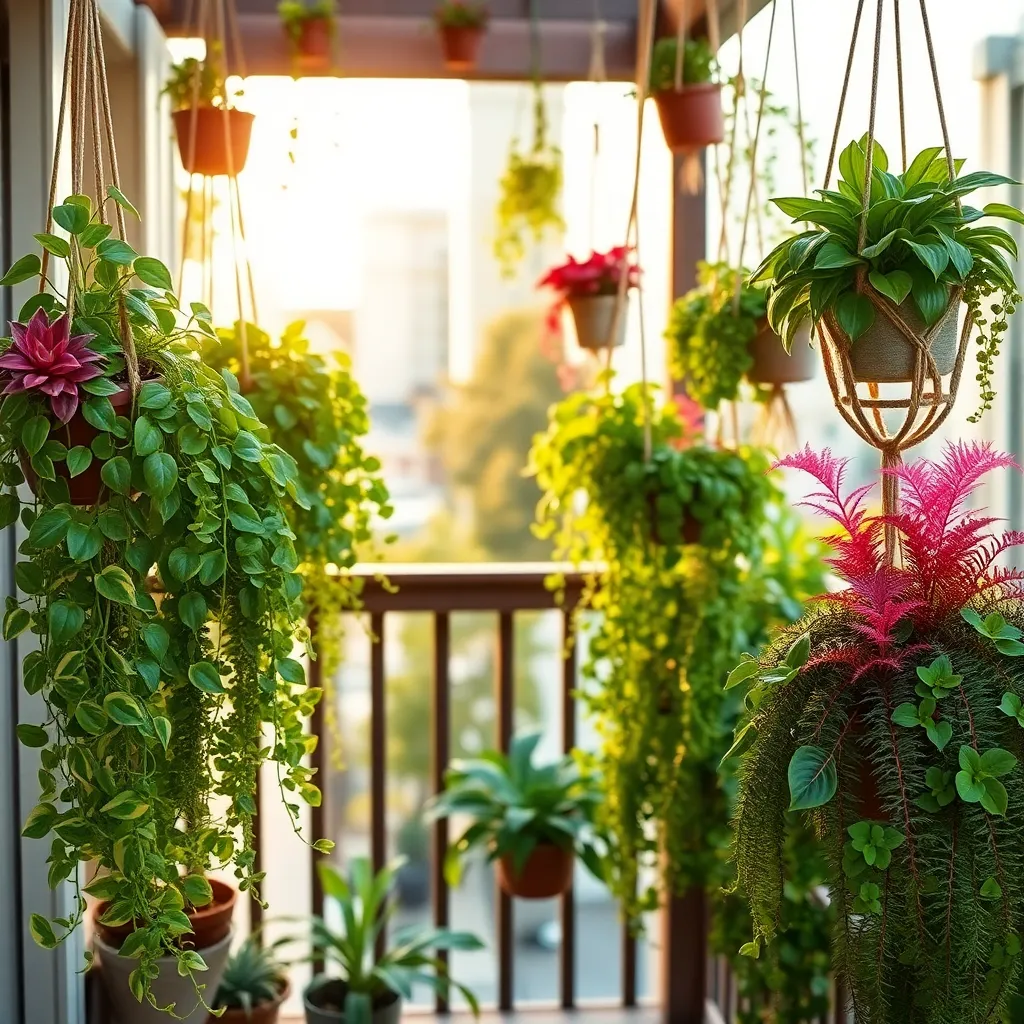
When selecting low-cost hanging plants, consider varieties that thrive in minimal care conditions. Spider plants are an excellent choice as they are easy to propagate and adapt to various lighting conditions, making them perfect for beginners on a budget.
Another affordable option is the Pothos plant, known for its resilience and air-purifying qualities. These plants grow well in indirect sunlight and require watering only when the soil is dry to the touch, reducing maintenance time and costs.
For those interested in a bit more color, Tradescantia offers vibrant leaves and is simple to care for. This plant prefers well-draining soil and can thrive with weekly watering, making it both economical and visually appealing for any indoor space.
To ensure success, choose a lightweight potting mix designed for indoor plants, which can significantly improve growth. A mix containing peat moss and perlite will provide excellent drainage and aeration, essential for the health of hanging varieties.
Encourage growth by occasionally feeding your plants with a balanced, water-soluble fertilizer. Apply this during the growing season, typically every four to six weeks, to keep your plants lush and thriving without breaking the bank.
Advanced gardeners can experiment with DIY propagation techniques to expand their collection affordably. For instance, propagate spider plants by cutting off the plantlets and placing them in water until roots develop, allowing for easy expansion of your indoor garden.
Care Tips for Hanging Plants

Caring for hanging plants in your home requires attention to their unique growing conditions. Ensuring proper light, watering, and nutrient needs will help your plants thrive and maintain their beauty.
First, consider the location of your hanging plants. Most varieties thrive in bright, indirect sunlight, which can be achieved by placing them near a window with sheer curtains.
Watering is crucial but can be tricky with hanging plants. Aim to water them thoroughly until it drains out of the bottom, and allow the top inch of soil to dry out before the next watering.
Beyond basic watering, feeding your hanging plants with a balanced, water-soluble fertilizer every four to six weeks can promote healthy growth. Choose a fertilizer with equal parts nitrogen, phosphorus, and potassium to support overall plant health.
For those looking to take their plant care to the next level, consider the specific humidity needs of your plants. Many hanging plants, such as ferns and spider plants, benefit from increased humidity, which you can provide by misting or using a humidifier.
Finally, regularly check for pests like aphids or spider mites, which can be more challenging to spot on hanging plants. Inspect the undersides of leaves and treat any infestations promptly with insecticidal soap or neem oil.
Best Spots for Hanging Plants
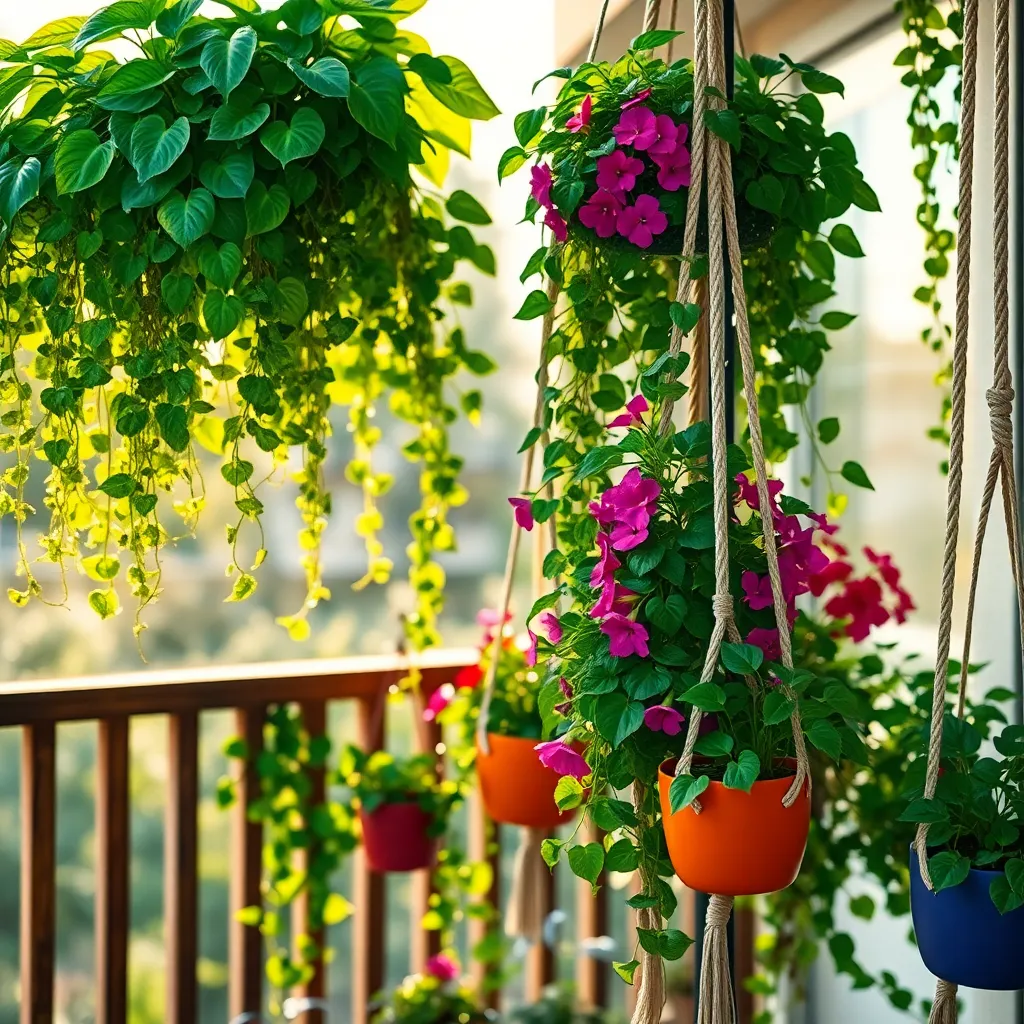
Finding the perfect spot for your hanging plants can make a significant difference in their health and appearance. Choose locations that mimic their natural light needs, such as near east or west-facing windows for most indoor plants.
For plants that thrive in higher humidity, like ferns or pothos, consider hanging them in a bathroom with a window. The natural humidity from showers can help these plants flourish, reducing the frequency of misting.
In spaces with limited natural light, such as basements or north-facing rooms, supplement your hanging plants with grow lights. LED grow lights are energy-efficient and can be adjusted to provide the necessary light spectrum for your plants.
For outdoor hanging plants, ensure they are protected from harsh afternoon sun, which can scorch their leaves. A shaded porch or a spot under a tree can offer the perfect balance of light and protection.
Affordable Containers and Hooks
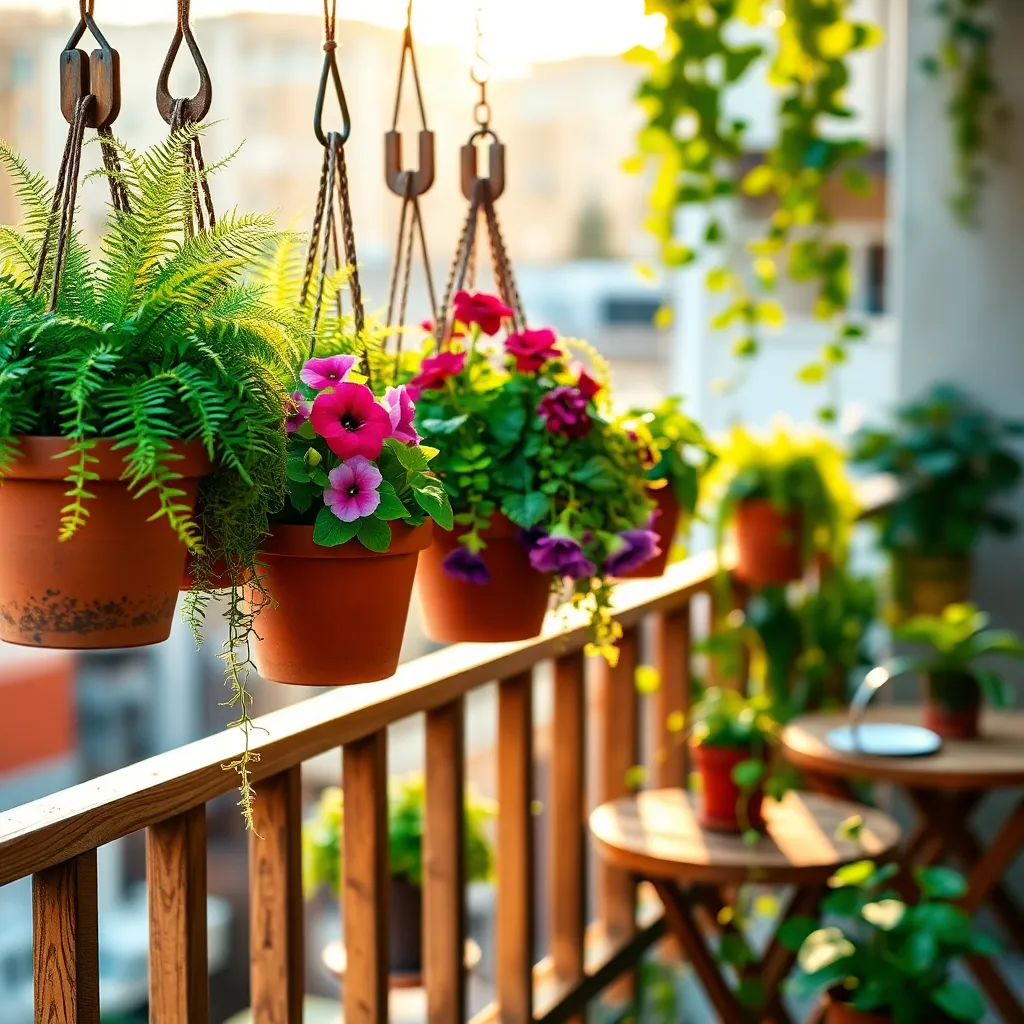
Creating a beautiful display of hanging plants starts with choosing the right containers and hooks. For a budget-friendly option, consider using repurposed items like old baskets or tin cans, which can be easily transformed into unique plant holders with a bit of creativity.
Ensure that each container has adequate drainage to prevent waterlogging, which can lead to root rot. Drill small holes in the bottom of your chosen containers if necessary, and line them with a thin layer of gravel before adding potting soil.
When selecting hooks, look for sturdy materials that can support the weight of your plants, especially when they’re fully watered. Metal S-hooks or ceiling hooks are often affordable and reliable choices, capable of holding both lightweight and heavier plant containers.
Consider the placement of your hanging plants to maximize light exposure and accessibility for care. Position hooks near windows or in well-lit areas to ensure your plants receive enough sunlight, which is crucial for their growth and health.
Easy-to-Maintain Plant Selections
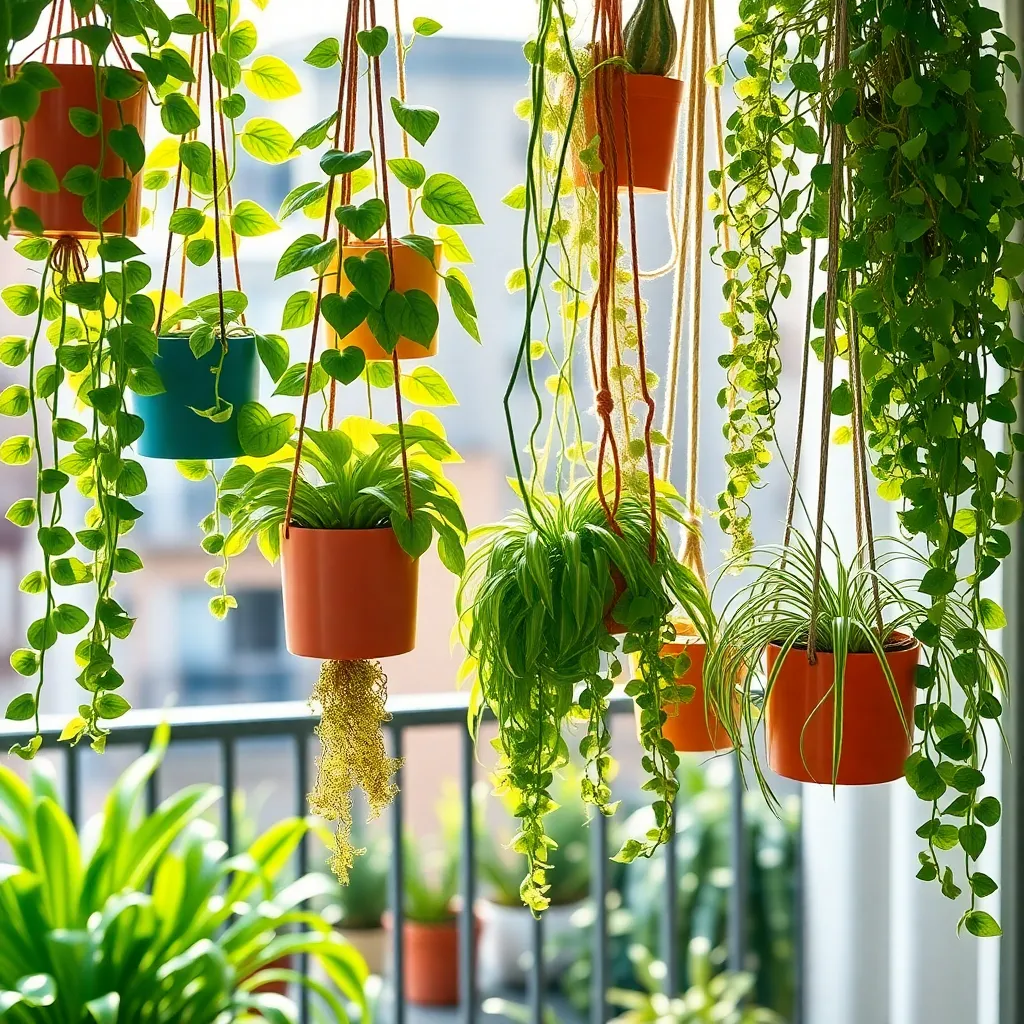
Choosing the right plants can make hanging gardens easy to maintain, especially if you are new to indoor gardening. Pothos is a fantastic choice due to its tolerance for low light and infrequent watering, making it perfect for busy households.
Spider plants are another excellent option for low-maintenance hanging plants. They thrive in indirect light and prefer to dry out between waterings, so you don’t need to worry about a strict watering schedule.
For those looking for a touch of color, Boston ferns offer lush greenery with little effort. While they enjoy humidity, simply misting them occasionally or placing them in a bathroom with indirect light can meet their needs.
If you’re interested in a plant that requires minimal care but offers maximum impact, consider the string of pearls. This succulent needs bright, indirect light and very little water, making it both unique and undemanding.
To ensure your hanging plants thrive, use a well-draining potting mix that caters to their specific needs. For example, a mix of peat and perlite works well for most plants, while succulents like the string of pearls prefer a cactus soil mix.
Regularly check the drainage of your containers to prevent waterlogging, which can lead to root rot. If you notice water pooling at the bottom, adjust your watering frequency or consider repotting with fresh soil.
Incorporating easy-to-maintain plants into your home not only adds beauty but also purifies the air and boosts your mood. By selecting varieties that suit your lifestyle, you can enjoy a thriving indoor garden with minimal effort.
Light Requirements for Each Plant
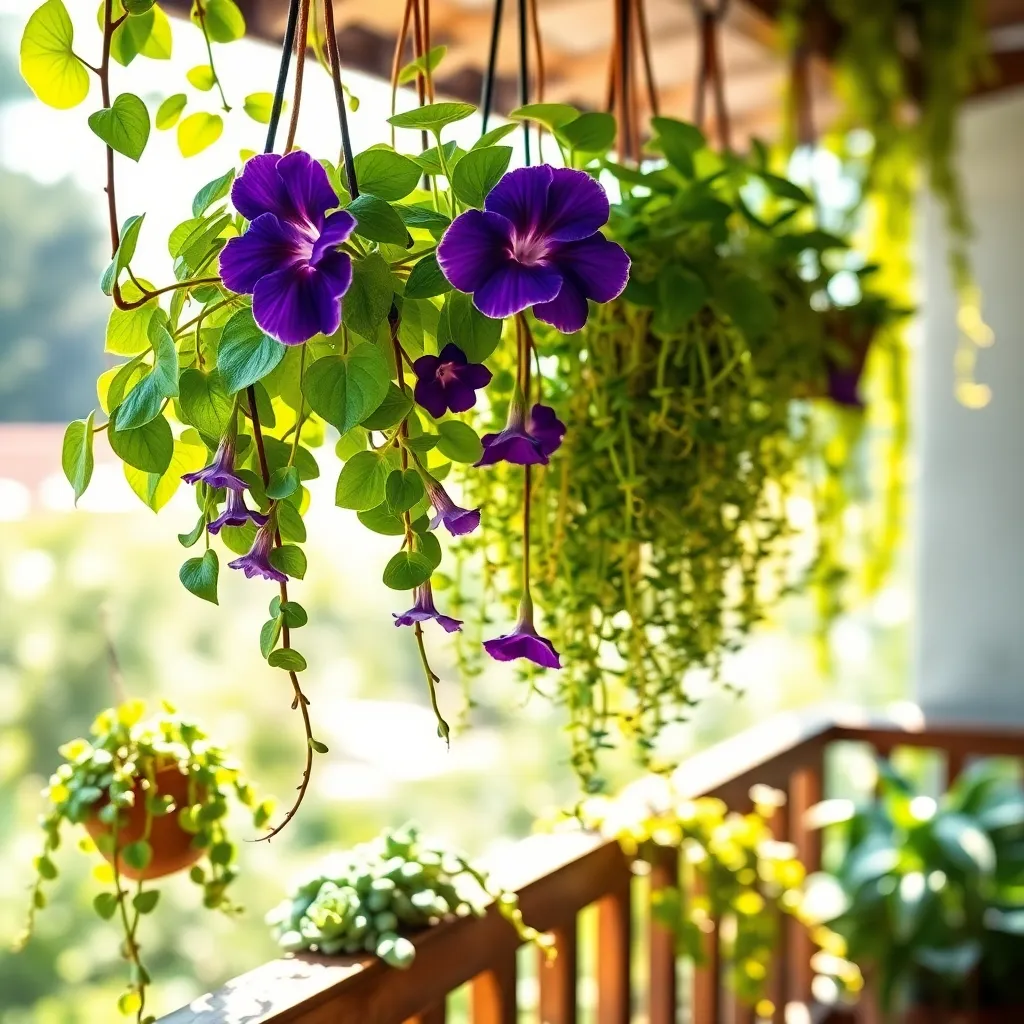
Light conditions play a crucial role in the health and growth of your hanging plants. Understanding these requirements ensures that each plant thrives, even on a budget. For plants like the spider plant, which is known for its adaptability, aim for bright, indirect light. You can place them near a window where they get filtered light, or in a spot with partial shade.
Conversely, pothos plants are highly forgiving and can tolerate low light conditions. This makes them a perfect choice for less sunny spots in your home. When caring for a Boston fern, remember that they prefer a more humid environment with indirect light. Keeping them in a bathroom with a window or using a humidifier can help them flourish.
For the sun-loving English ivy, ensure they receive at least a few hours of direct sunlight each day. A location that gets morning sun but is shaded during the afternoon is ideal to prevent leaf scorch. If you’re looking after a peace lily, remember they thrive in shade or low light conditions. Their ability to adapt makes them a versatile choice, perfect for any room with minimal light.
Meanwhile, string of pearls plants require a bit more attention with their need for bright, indirect light. They do well in areas with plenty of natural sunlight but should be protected from the harsh afternoon sun. By ensuring each plant has the right amount of light, you’ll create a vibrant, healthy environment that even novice gardeners can maintain with confidence.
Watering Techniques on a Budget
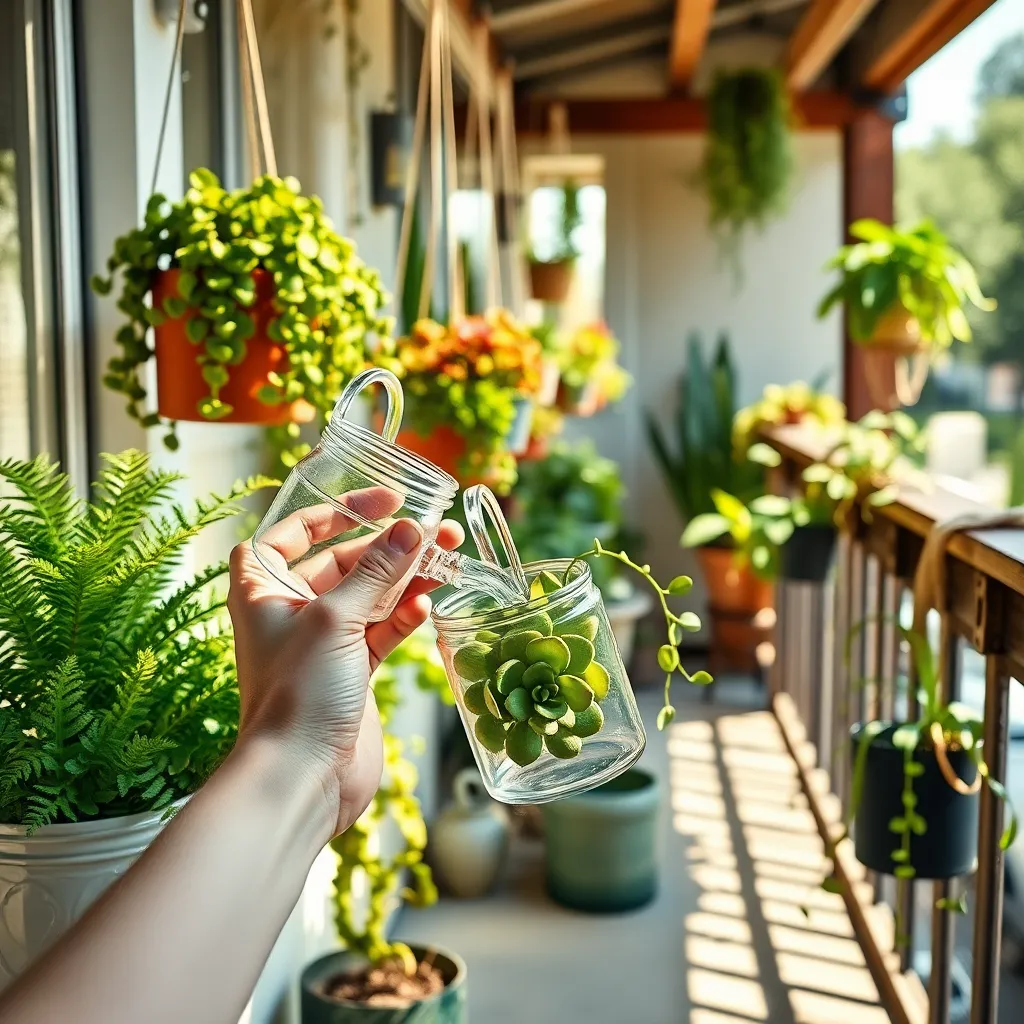
Watering your hanging plants effectively doesn’t have to be costly. A simple, budget-friendly approach is to use recycled water from your home, such as water collected from rinsing vegetables or from dehumidifiers. Ensure the water is free of soap or other chemicals, as these can harm your plants.
For those looking to conserve water and save on costs, consider using a drip irrigation system. DIY drip systems can be created using household items like plastic bottles and straws, providing a steady water supply to your plants. This method helps prevent overwatering, a common issue with hanging plants.
An easy way to avoid using too much water is to integrate mulch into your plant care routine. Mulch helps retain moisture in the soil, reducing the frequency of watering needed. Organic mulches such as shredded leaves or bark chips are cost-effective and improve soil quality over time.
To ensure your hanging plants stay hydrated, especially during hot weather, consider the time of day you water them. Early morning is ideal as it allows water to soak into the soil before the sun evaporates it. Evening watering is also effective, but be mindful of not leaving plants too wet overnight to prevent fungal issues.
DIY Fertilizers for Thriving Growth
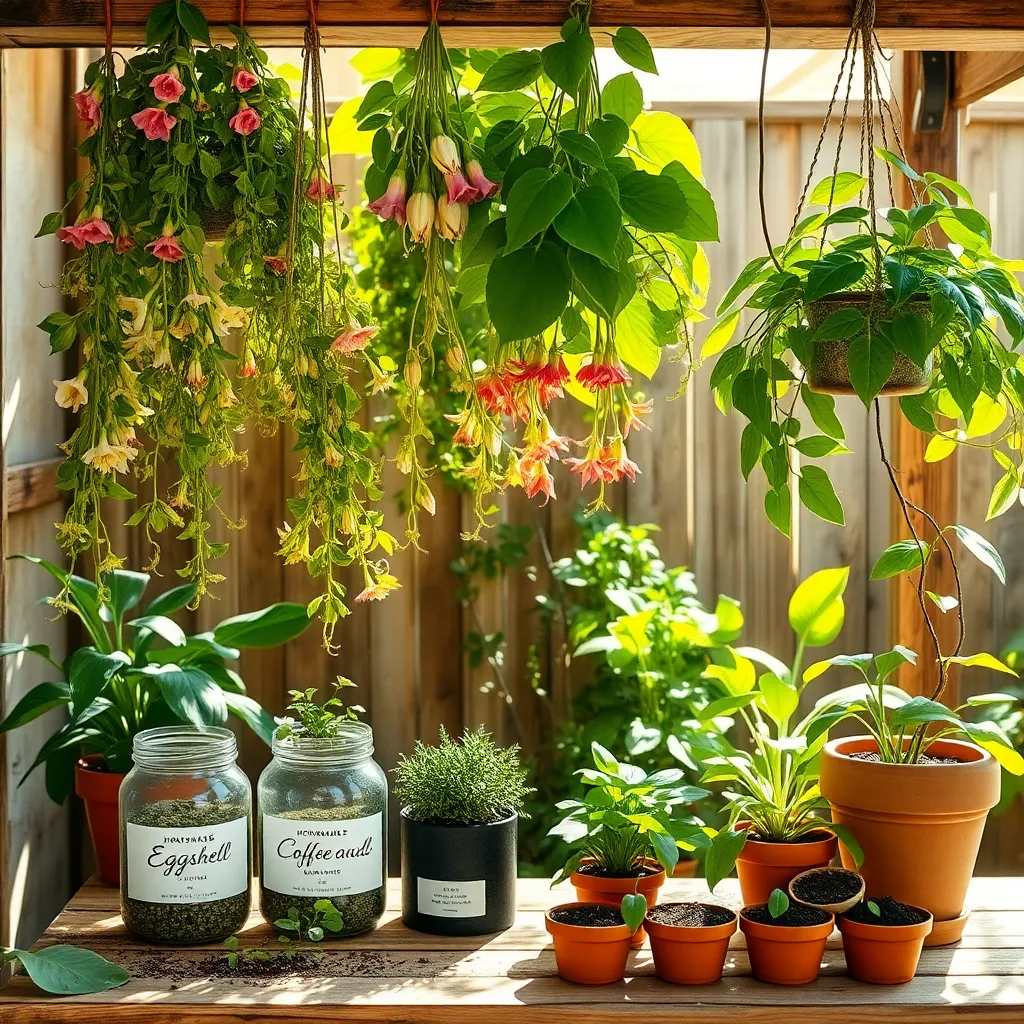
Creating your own fertilizers at home is not only budget-friendly but also a sustainable way to enhance plant growth. Start with composting kitchen scraps such as fruit peels, coffee grounds, and eggshells to create a nutrient-rich mixture.
Another effective DIY fertilizer is made from banana peels, which are rich in potassium essential for plant health. Simply bury a few peels in the soil near your plants or soak them in water to create a nourishing banana peel tea.
For gardeners looking to boost nitrogen levels, consider using grass clippings or alfalfa. These materials can be applied directly to the soil or steeped in water to create a potent liquid fertilizer.
Experienced gardeners might want to try making a fish emulsion, which is a powerful liquid fertilizer. By fermenting fish scraps with water, you can create a solution that is high in nitrogen and phosphorous, supporting vigorous plant growth.
Creative Display Ideas on a Budget
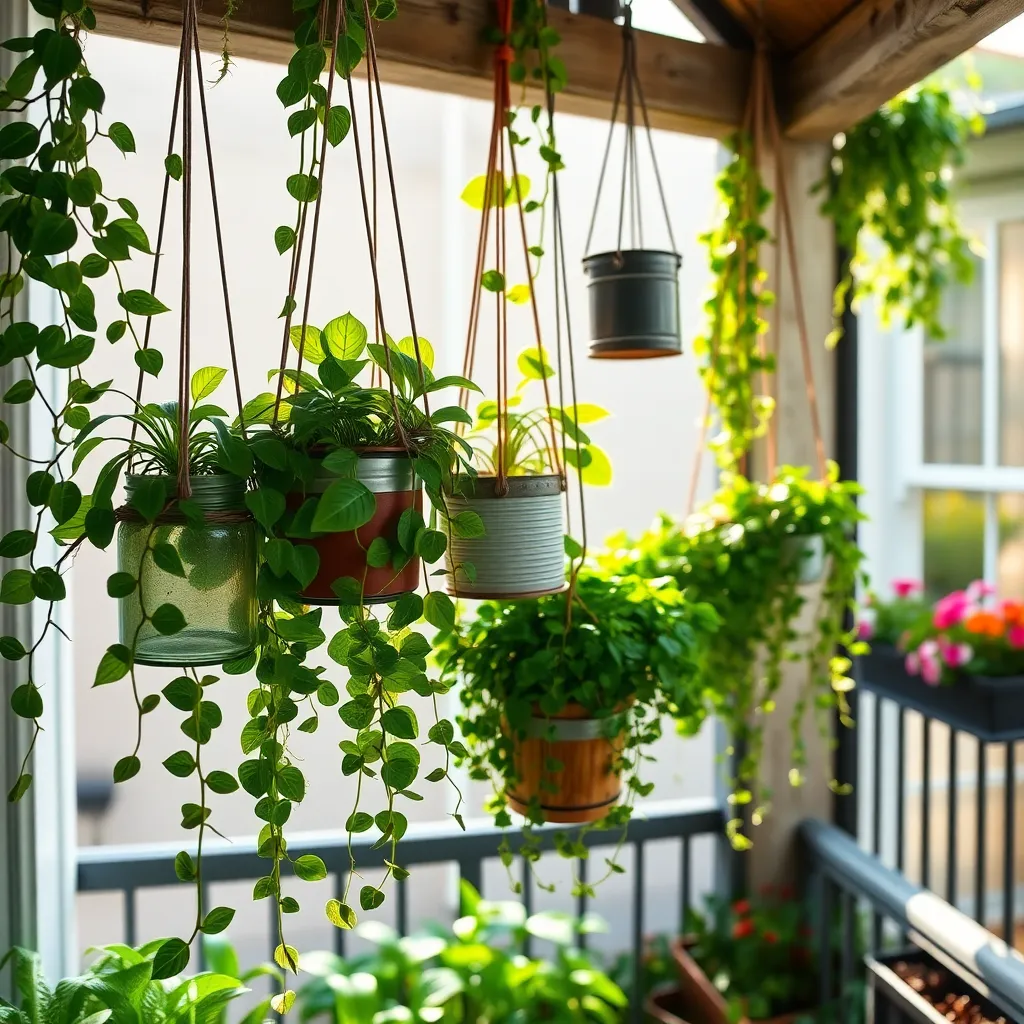
Creating beautiful displays for your hanging plants doesn’t have to break the bank. Repurpose household items like old baskets or mason jars to craft unique hanging planters. These items can be easily secured with twine or sturdy rope, providing a rustic charm. Ensure they have proper drainage by drilling small holes if needed.
Another budget-friendly idea is to use macramé plant hangers. Macramé can be crafted at home with simple knots, adding a personal touch to your plant displays. For beginners, there are countless online tutorials to guide you through the process. This technique adds both a decorative element and functionality, as it allows you to adjust the height of your plants easily.
For a more advanced touch, try creating a vertical garden using a wooden pallet. Line the pallet with landscape fabric and fill it with lightweight potting soil. Plant your choice of herbs, succulents, or trailing plants like pothos. This setup not only saves space but also creates a stunning living wall.
Consider using hanging plant shelves to arrange multiple plants at different heights. These shelves can be made from reclaimed wood or inexpensive materials from your local hardware store. Arrange your plants based on their light requirements, placing them near a window for optimal growth. Be mindful of watering needs, as plants on higher shelves might dry out faster than those below.
Final Thoughts on Cost-Effective Greenery
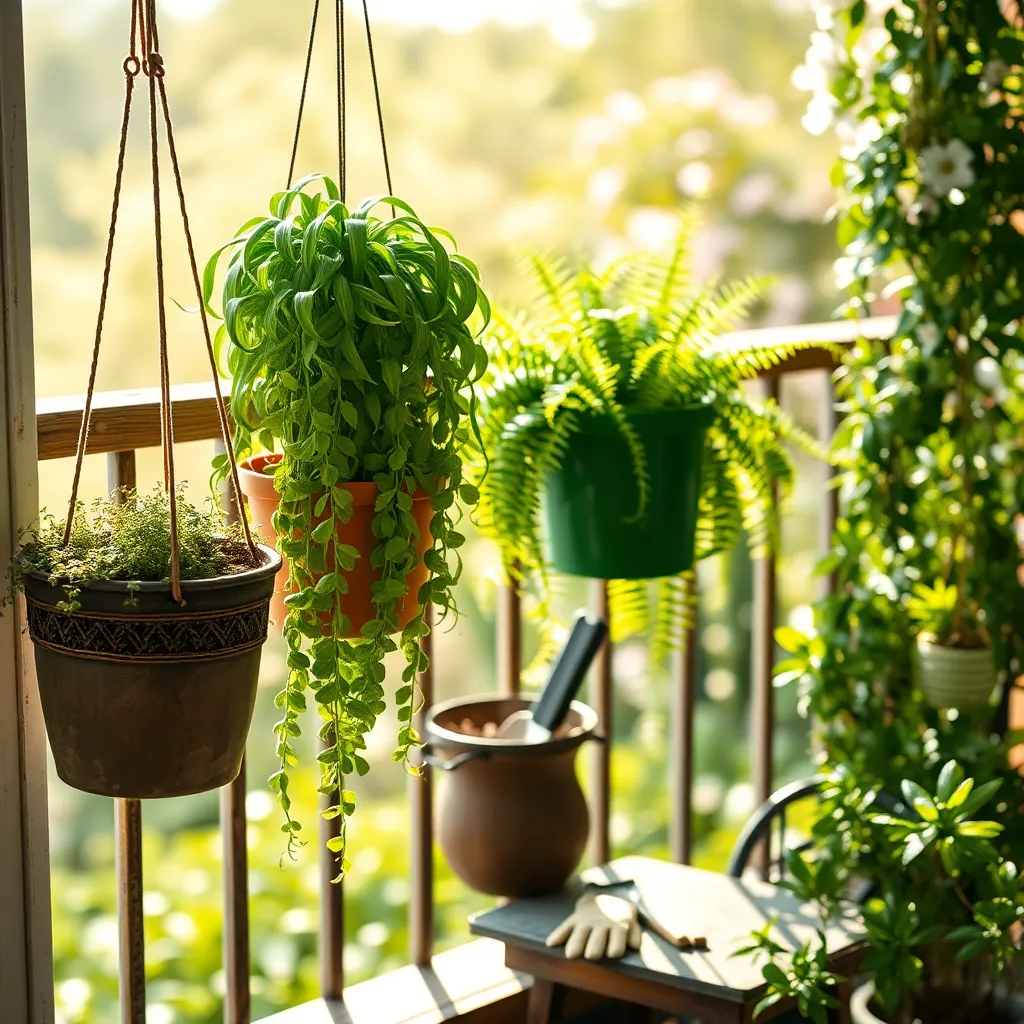
Choosing cost-effective greenery is not only budget-friendly but also a sustainable choice. When selecting plants, opt for species that thrive in your local climate to minimize maintenance and additional costs.
To save money, consider propagating your plants from cuttings. This method is both economical and rewarding, allowing you to cultivate more plants without purchasing new ones.
For beginners, start with hardy plants like pothos or spider plants, which require minimal care. These plants thrive in various conditions, making them perfect for those new to gardening.
Experienced gardeners can experiment with more complex propagation techniques. Try water propagation for vining plants, as it’s a straightforward method to watch roots develop.
Be mindful of your plant’s soil requirements to ensure healthy growth. Use a well-draining potting mix to prevent root rot, particularly in hanging baskets where water can accumulate.
Regularly check the moisture level of your plants by sticking a finger into the soil. Most indoor plants thrive with a watering schedule that allows the top inch of soil to dry out between waterings.
Remember to rotate your hanging plants periodically for even growth. This simple action ensures that all sides of the plant receive adequate light, promoting a balanced and lush appearance.
Conclusion: Growing Success with These Plants
As we explored the world of budget-friendly hanging plants, we unearthed 12 key relationship concepts that can flourish in our homes and hearts. From the nurturing consistency of the pothos to the adaptable spirit of the Boston fern, each plant mirrors essential virtues like patience, adaptability, and mutual growth. Just as the trailing vines of a string of pearls elegantly adapt to their surroundings, successful relationships thrive on flexibility and understanding.
Now, it’s your turn to cultivate these qualities. Consider starting with something simple yet profound—select one plant that resonates with your current relationship dynamic and commit to caring for it as a symbol of your dedication to nurturing connections in your life.
To keep these insights at your fingertips, bookmark this article as your go-to guide for relationship growth and inspiration. This small action can serve as a reminder that, like these plants, relationships require ongoing attention and care.
Looking forward, remember that with each step and each act of nurturing, you are sowing the seeds for a lush and lasting relationship. Save this guide now, and let it be your companion on the journey to relationship success.

